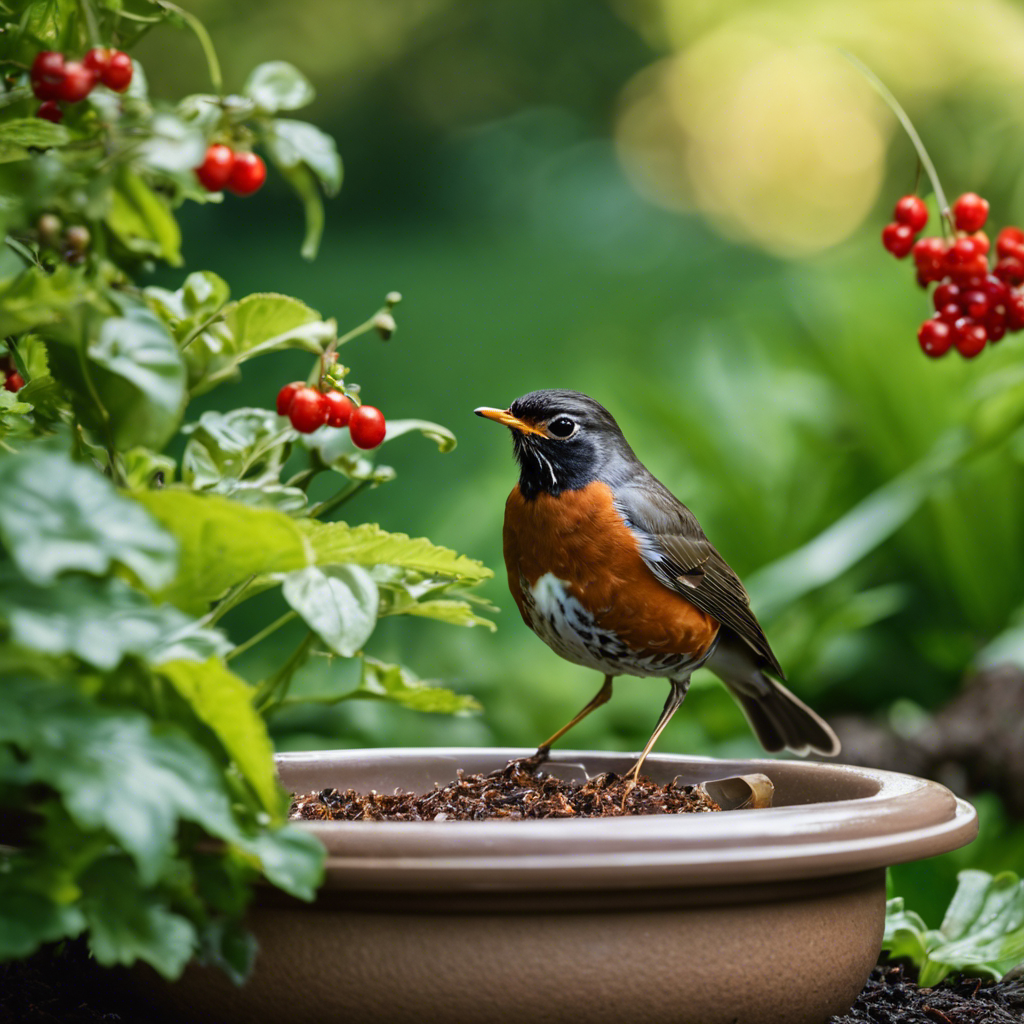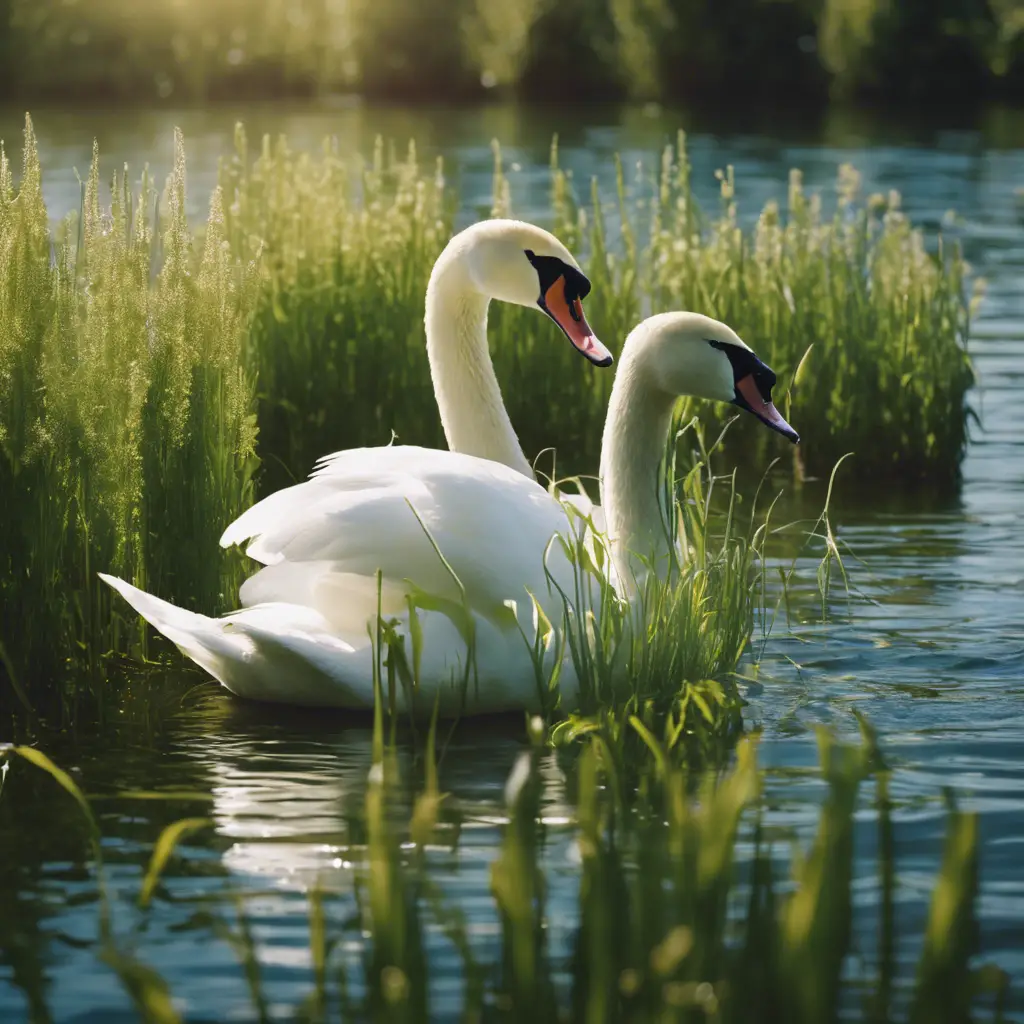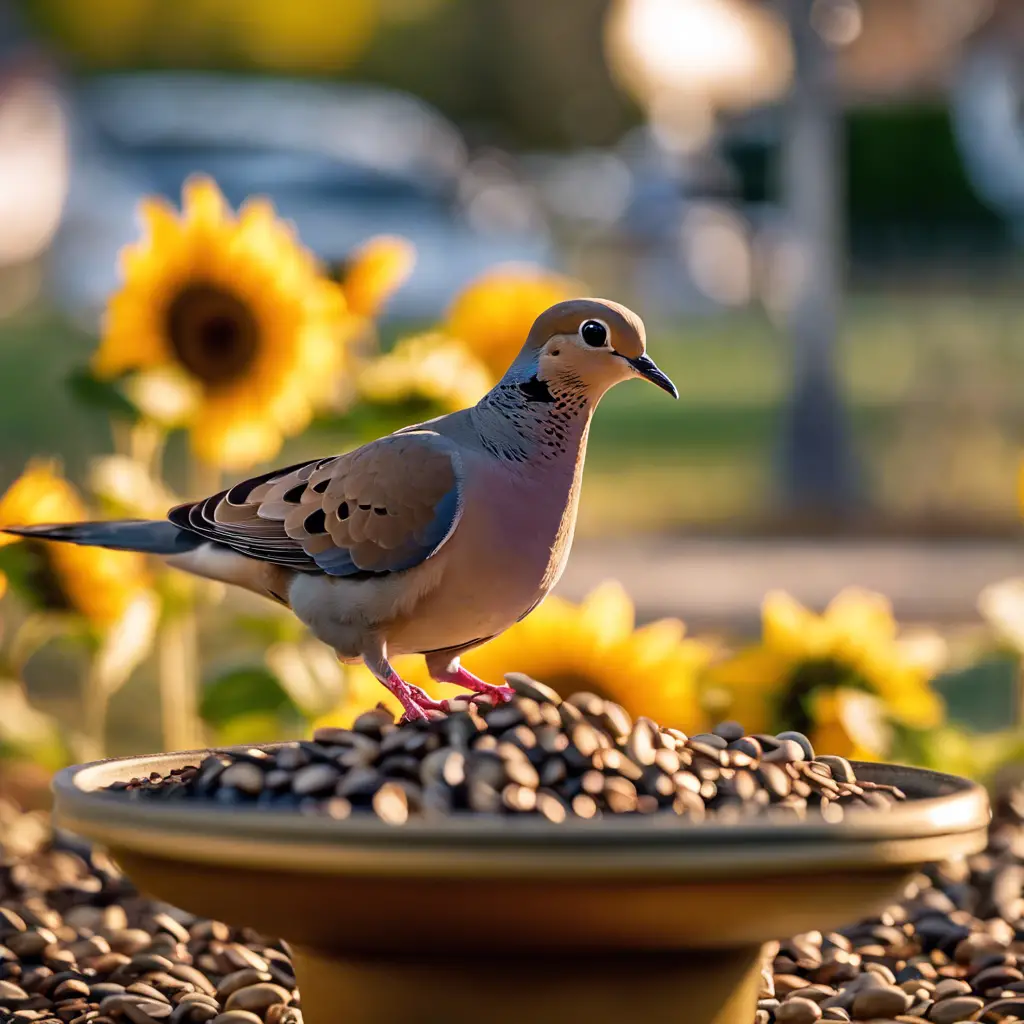Through my experience as a birdwatcher and my expertise in ornithology, I’ve formed a special bond with the American robin. I believe their feeding habits are fascinating.
In my own garden, I’ve observed them foraging for worms and insects with an almost surgical precision. I’ve watched the seasons change their diet to include berries, understanding that this adaptation is vital for their survival.
By cultivating a bird-friendly environment, I’ve ensured these melodious creatures grace my mornings year-round. Seeing them thrive, I believe that providing natural food sources and water is key to a harmonious coexistence with these beautiful birds.
Key Takeaways
- American Robins adapt their diet seasonally, shifting from worms and insects to fruits and berries as the weather cools.
- During the breeding season, a robin’s diet consists largely of crawling mealworms and other insects, which provide essential protein for the growth of their young.
- Robins rely on a variety of berries and fruits, such as Indian plum, thimbleberry, bitter cherry, huckleberry, and Oregon grape, for essential nutrients.
- Providing a variety of food sources and access to mud is key to the survival and development of baby robins.
Robin’s Seasonal Diet Overview
You’ll find that American Robins adapt their diet seasonally, shifting from primarily worms and insects to fruits and berries as the weather cools. During the breeding season, a robin’s diet consists largely of crawling mealworms and other insects they forage for their food. This high-protein fare is crucial for their young.
As the time of year transitions into fall and winter, these birds demonstrate their adaptability by turning to nature’s dessert. They eat fruit like blueberries, blackberries, and raspberries, which provide essential, calorie-dense nutrients during the colder months.
This dietary change coincides with the decrease in insect activity, ensuring that robins have a consistent food source year-round.
Earthworms: A Robin Favorite
As you observe the American Robin’s seasonal shift in diet, it’s clear that earthworms remain a staple food source, especially during the breeding season. These wiggly critters are at the top of the menu. Robins eat earthworms with gusto, and they’re a critical food source that fuels their energy-intensive activities like mating and nesting.
Robins prefer to forage for earthworms on damp mornings when these invertebrates are closer to the surface. Their excellent vision and hearing make them adept at locating their favored prey. Here’s a quick guide to understanding why earthworms are a robin favorite:
| Aspect | Detail | Relevance to Robins |
|---|---|---|
| Availability | Abundant in moist soil | Easy to find during breeding season |
| Nutritional Value | High in protein | Essential for growth and health |
| Foraging Technique | Sight and sound to locate | Efficient hunting method |
| Seasonal Shift | Less reliance on worms in colder months | Switch to fruits and berries |
Berries and Fruits Robins Love
Many American Robins have a fondness for a range of berries and fruits, which become their primary food source as the seasons change. These birds particularly enjoy Indian plum, thimbleberry, bitter cherry, huckleberry, and Oregon grape. Trees and shrubs that provide fruits become hotspots for foraging robins, especially in the colder months when they rely on calorie-dense energy sources.
During winter, you’ll notice they’ve a preference for holly berries, apples, and strawberries to maintain their energy levels.
If you’re keen to attract these birds, offer chopped apples at your bird feeders. As availability decreases, robins forage in flocks for leftover summer treats like blueberries, blackberries, and raspberries. These berries and fruits robins love aren’t just a meal but a vital energy source during their nomadic winter foraging.
Insects and Invertebrates Galore
In addition to their love for berries, American Robins also feast on a smorgasbord of insects and invertebrates. This includes beetles, caterpillars, and spiders, which provide the energy they need throughout their active days.
When you’re looking to attract these birds to your yard, it’s important to consider that they can’t resist insects and invertebrates galore. One way to do this is by offering mealworms, especially dried mealworms, as a protein-rich snack. Another tip is to place a variety of food sources to mimic their natural foraging habits.
While American Robins adore berries, it’s essential to remember that the inclusion of insects and invertebrates in their diet is also crucial. By catering to their dietary needs, you’ll not only enjoy watching them up close but also support their well-being year-round.
Robins’ Winter Feeding Habits
While you’ve learned about their penchant for insects and invertebrates, it’s important to note that robins’ diets shift in winter to primarily include berries and fruit. As American Robins migrate, they adopt robins’ winter feeding habits that are crucial for survival. They’ll feast on whatever berries they can find, which provide abundant food when the ground is too hard for their usual fare.
Here’s a snapshot of what may be on a robin’s winter menu:
| Berries | Trees/Shrubs | Emotion |
|---|---|---|
| Blueberries | Oak | Nostalgia |
| Blackberries | Holly | Contentment |
| Raspberries | Cedar | Curiosity |
| Holly Berries | Apple | Comfort |
| Strawberries | Juniper | Satisfaction |
Baby Robins’ Nutritional Needs
As you cater to the needs of baby robins, it’s essential to understand that from the moment they hatch, their diet must be rich in protein to fuel their rapid development. The parents tirelessly supply their young with a variety of food to meet these demands.
Here’s what you need to know about feeding baby robins:
- Insects and Worms: The bulk of a baby robin’s diet. These provide the necessary protein that’s crucial for growth.
- Fruit: As they grow, fruit becomes part of their diet, offering vital nutrients.
- Mud for Nesting: Access to mud is important not for eating, but for the construction of their nest, which indirectly supports their development by providing a safe home.
Ensuring these elements are available is key to the survival of baby robins.
Safe Foods for Backyard Robins
You can attract American robins to your backyard by planting fruit-bearing trees and offering specific foods they enjoy. While they don’t typically eat birdseed, there are plenty of safe foods for backyard robins that you can provide.
Scatter sunflower hearts, which are hulled sunflower seeds, on the ground or in feeding trays. These are a favorite for robins and don’t create a mess with shells.
Additionally, chopped apples, berries, and mealworms are excellent choices. Ensure you soak dried mealworms in water before offering them, as this gives robins the valuable moisture they need to drink and bathe.
Water Sources for Hydration
In addition to their varied diet, American robins need reliable water sources to stay hydrated and healthy. Across the United States, these birds seek out areas where they can drink and bathe, which also plays a crucial role in their nesting habits, as robins use mud for nest building.
To support local robin populations, consider the following:
- Provide bird feeders with attached water trays to cater to their dietary and hydration needs simultaneously.
- Install a birdbath with a mister or dripper, attracting robins with the sound and movement of water.
- Create a naturalistic water feature with shallow edges and mud patches, mimicking the robins’ preferred habitats for both hydration and gathering nest materials.
Attracting Robins to Your Garden
To attract robins to your garden, there are a few key steps you can take. First, plant a variety of fruit-bearing trees and shrubs. This will provide a plentiful food source for the robins. Some good options include Indian plum, thimbleberry, bitter cherry, huckleberry, and Oregon grape.
Next, make sure to provide a water source for the robins. They need water for both drinking and bathing. You can set up a birdbath or a shallow dish filled with water.
In addition to the natural food sources, you can supplement the robins’ diet by offering chopped apples, berries, and mealworms. This will help keep them coming back to your garden.
To encourage robins to nest in your garden, consider offering nest platforms. These are simple structures that provide a safe place for robins to build their nests.
Creating a diverse environment with ample food and nesting opportunities is crucial for attracting robins to your garden.
Lastly, it’s important to avoid using pesticides in your garden. These chemicals can be harmful to the robins and their food supply.
Frequently Asked Questions
What Is the Best Food to Feed Robins?
You’re looking for the best food to feed robins? Offer them chopped apples, berries, and mealworms. Plant berry-producing shrubs and ensure a mix of seeds and insects in your yard for variety.
Do American Robins Eat Apples?
Yes, you’ll find that American robins do eat apples. They enjoy a variety of fruits and berries, particularly during winter months, so offering chopped apples can attract them to your yard.
Do American Robins Eat Birdseed?
You’re mistaken if you think American robins eat birdseed; they actually prefer natural foods like worms, berries, and fruit, so you won’t attract them with typical birdseed.
Can American Robins Eat Bananas?
Yes, you can feed American robins bananas. They enjoy a variety of fruits, and bananas can be a nutritious addition to their diet, especially when other food sources are scarce.
Conclusion
You’ve learned that American robins adapt their diet with the seasons, feasting on earthworms, insects, and fruits like berries. In winter, they rely on fruit to survive.
Baby robins need protein-rich foods, so cater to them with safe, natural offerings. Don’t forget to provide water for hydration.
By planting berry bushes and maintaining a water source, you’ll make your backyard a robin-friendly haven, inviting these melodious birds to dine and serenade you through the year.

An avid ornithologist, zoologist and biologist with an unwavering passion for birds and wild animals.
Dr. Wilson’s journey in ornithology began in childhood and led him to obtain a Ph.D. in Ornithology from the prestigious Avian Research Institute. He has worked closely with renowned experts in the field and conducted extensive research and field studies globally.





